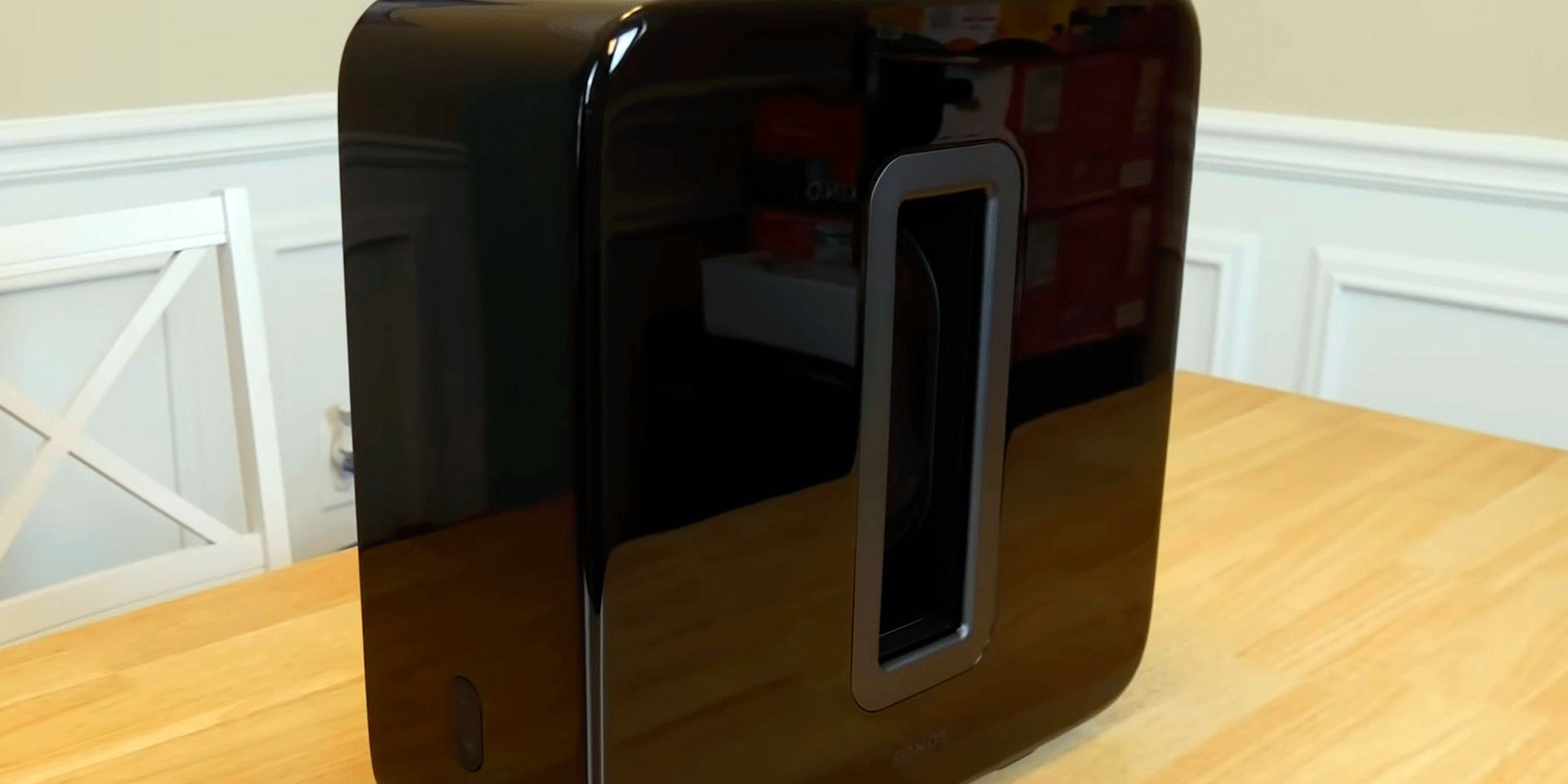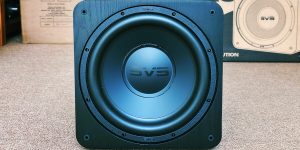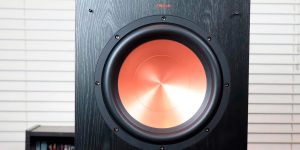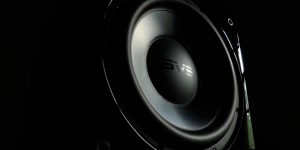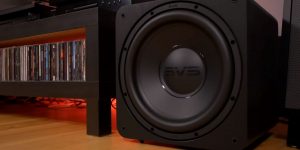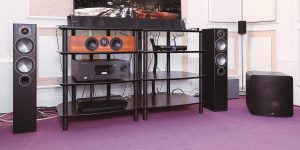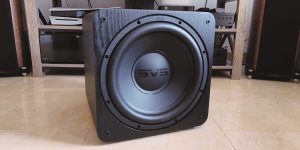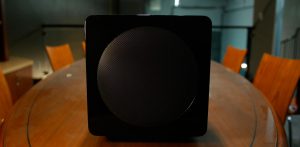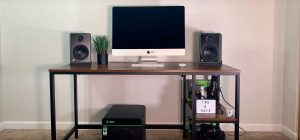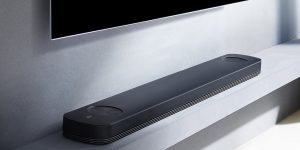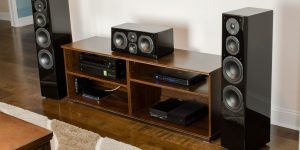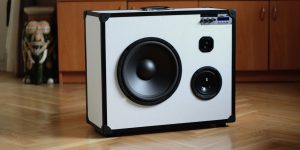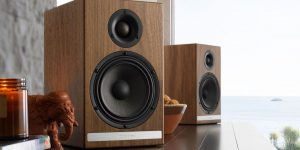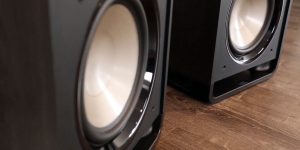A subwoofer is always a great way to enhance your music, movie, and video game experience and “pump up” your home multimedia system. There are a lot of such devices on the market from hundreds of brands with different features and characteristics. Following current trends, I am sure you want to buy the best wireless subwoofer and enjoy the new sound without thinking about different wires and space for your new purchase. Yes, the era of wired devices is fading, and we are maximizing the capabilities of various wireless technologies. Here are just a few of the major ones:
- Control and management of the subwoofer go via a mobile app.
- It is easy to move wireless subwoofers around the house.
- No more unneeded wires.
Given the relevance of such devices, I have selected some of the most interesting models of wireless subwoofers and tested them. Everything will be honest! And the advantages, disadvantages, and, most importantly, my personal impressions. To avoid ” burying yourself” in the technical terms of the manufacturers, it is enough to read my review and make an informed choice of your new purchase.
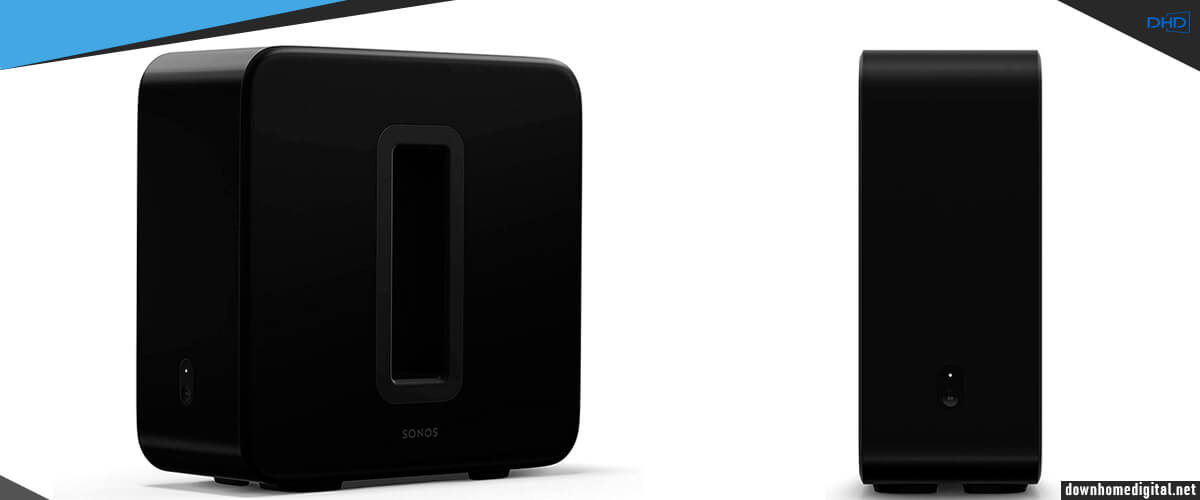
Wireless home theater subs comparison table
| Name | Power, W | Driver size, inch. | Frequency response | Dimensions, inch (HxWxD) | Review |
|---|---|---|---|---|---|
| Sonos Sub Gen 3 best overall | 650 | 6 | to 25 Hz | 15.9x15x6.3 | Review |
| Klipsch SPL-150 premium | 400 | 15 | 18Hz-125Hz | 22.3×19.5×21.5 | Review |
| Samsung SWA-W700 also great | N/A | N/A | N/A | 12.9×11.6×11.6 | Review |
| Klipsch R-12SWi budget | 200/400 | 12 | 29Hz-120Hz | 16x14x18.5 | Review |
We don’t recommend
Sonos SUB
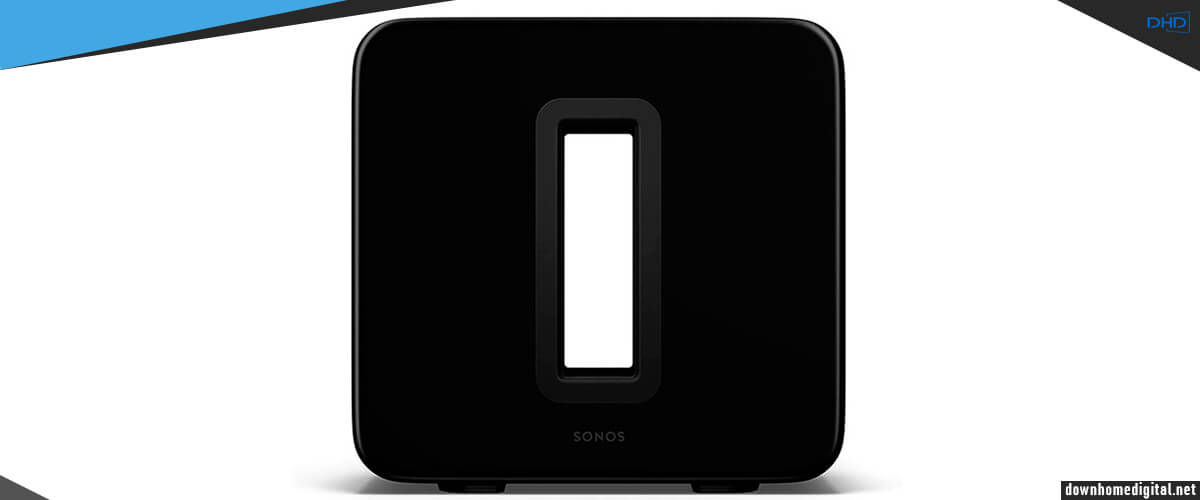
Cons
- It is already an outdated model from this manufacturer, and you can simply get Sonos Sub Gen 3.
- The range of the wireless signal is not enough to arrange a nice audio system at home.
- The application to manage this subwoofer is outdated and difficult to use.
- You may face connectivity issues.
Best wireless subwoofer reviews
Sonos Sub Gen 3 – best overall

The third generation Sonos Sub is a unique wireless subwoofer that adds the finishing touch to your system. It can become your best wireless subwoofer. A socket and the simple setup via the Sonos app are sufficient to generate impressively deep and dynamic bass throughout the room. Combine the subwoofer with two wireless speakers, and you have a fully equipped stereo system with a minimum of cables. Sonos Sub (Gen3) is available in high-gloss black or high-gloss white. A suitable wall bracket is optionally available.
In the third-generation Sonos Sub, the two woofers are built into the housing so that their fronts face each other. As a result, their vibrations are balanced out and are not transferred to the housing. This way, you get a very clean bass without a “housing sound”. Thanks to its special design, the Sonos Sub can work in both portrait and landscape format.
Moreover, due to two built-in force-canceling drivers, the new generation of WiFi subwoofers gives your system a decent bass boost that can not only be heard but also felt. Besides, Sonos has given the subwoofer a new surface and improved the technology, including higher storage capacity and a more powerful CPU.

The Sonos Sub 3 offers rousing cinema sound for your own four walls at the studio level. The smart bass box from Sonos is an active subwoofer. Two class D amplifiers are already integrated with the device. With a 6-inch driver, you enjoy receiving high-quality sounds.
As a subwoofer, it gives significantly more importance to the low frequencies in music and films. The room-filling sound lets you hear every chord, every bassline, and every drum beat and feel it deep in your stomach. But the speaker’s power is only 245 watts (not so little for a wireless speaker).
Thanks to Trueplay, you can rely on an optimized sound experience, no matter where you position the subwoofer. Whether lying on the floor or standing upright, the WLAN subwoofer from Sonos always delivers good performance. It is ideal for anyone who wants to get more out of their sound system and can be easily connected to other Sonos speakers. If we are talking about a selection of wireless systems, Sonos Sub Gen 3 deserves the first place for its direct purpose and cost and for the quality of signal transmission and bass support. It is hard to find a more popular independent multi-room system among users today. Also, the fact that you can select other components from the Sonos family can be considered an advantage, thus ensuring optimal consistency. The disadvantage, however, is that it is incompatible with all loudspeakers.
Key specs
- Power (RMS), W: 650.
- Driver size, inch: 6.
- Frequency response: to 25 Hz.
- Dimensions, inch (HxWxD): 15.9x15x6.3.
Pros
- Does not require a lot of space
- Simple and convenient installation with management via a mobile app
- It is a wonderful wireless subwoofer for TV sets
- Volume level allows you to enjoy music in quiet and loud ways
Cons
- It is not compatible with all speakers
Klipsch SPL-150 – premium
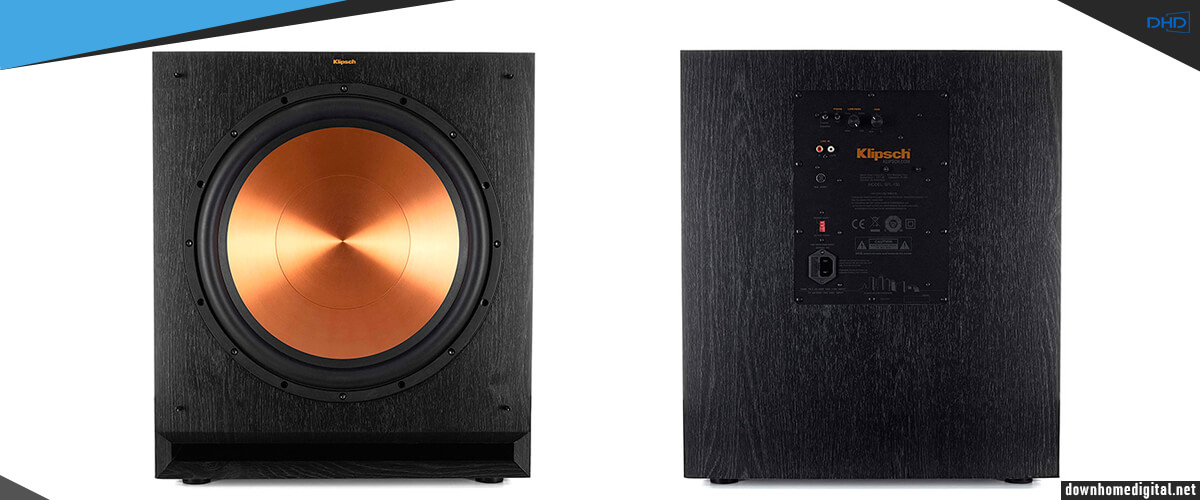
This is how the home cinema is really fun. Both maximum film levels with an earthquake character and dynamically played live music are accurately and impulsively reproduced by the Klipsch SPL-150. This bass unit also has a precise grip on soft tones and extends the listening pleasure tremendously and impressively down to the very lowest frequency ranges.
The class D amplifier module used in the SPL-150 provides plenty of power for the finest performance. It can deliver a full 400 watts (RMS) with short pulses; even 800 watts are available (Sonos Gen 3 has only 254 watts). The almost cubic housing of the SPL-150 was designed as a bass reflex construction with a large slot on the front of the subwoofer, which serves as a reflex port.
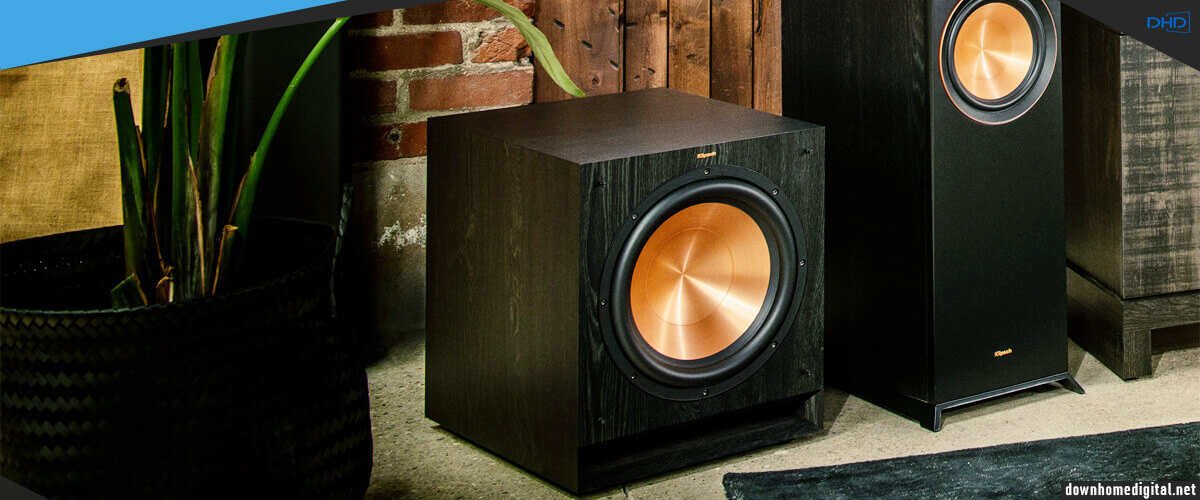
Thanks to its ample power amplifier output, it also provides sound for large listening rooms with enormous serenity, it has a first-class depth and creates an absolutely realistic spatial effect Impression and doesn’t fail when it comes to the subject of “precision”, but hits the mark here too. Despite the huge 15-inch bass driver with a cerametallic membrane, it hits even small bass impulses precisely.
It is a nice subwoofer, but the main drawback is the absence of an inbuilt wireless adapter. To enjoy it in wireless mode, you need to buy it separately.
The Klipsch SPL-150 is the standout of the brand’s speaker lineup. Recognizable everywhere: copper port, the wood finish cabinet, and, of course, the sound. So, I pick it without a doubt as one of the best wireless subwoofers in the premium segment. It costs only a couple hundred bucks more than the Sonos Sub Gen 3 but has almost twice as much power. It can be connected to absolutely any equipment, and the compatibility of Klipsch products with other brands is amazing. The 15-inch speaker will blow you away, whether you’re watching a movie or listening to music. Its clarity and detail are enough for any scenario. That’s why sound fans appreciate the tech so much. Yes, you’ll have to pay extra for a wireless adapter if we’re talking about wireless subs. It is not included in the set. But for the result you get, if you really want more bass, it’s worth it.
Key specs
- Power (RMS), W: 400.
- Driver size, inch: 15.
- Frequency response: 18Hz-125Hz.
- Dimensions, inch (HxWxD): 22.3×19.5×21.5.
Pros
- It is compatible with various adapters, receives, amplifiers, and other devices.
- Installation and adjustment do no take a lot of time.
- Precise and deep bass.
- On various pressure levels, you receive clear, high-quality sound.
Cons
- To use it as a wireless powered subwoofer, you need to buy an adapter.
Samsung SWA-W700 – also great
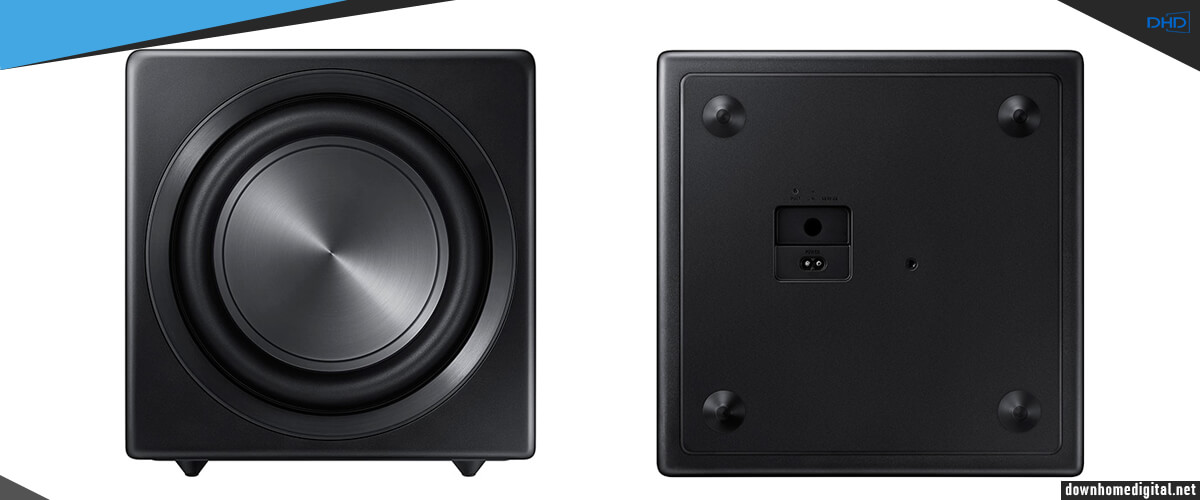
Also, Samsung’s excellent but unusual subwoofer, the SWA-W700, can offer great bass with only 25 watts of power. But don’t underestimate it. The brand has established itself significantly, after all, wouldn’t you agree? Yes, it’s a desktop sub, so to speak. But its sound quality can compete with more expensive ones. It delivers noticeably deep bass. The wireless model also impresses with its compact and space-saving cube design, which allows comfortable installation anywhere in the room.
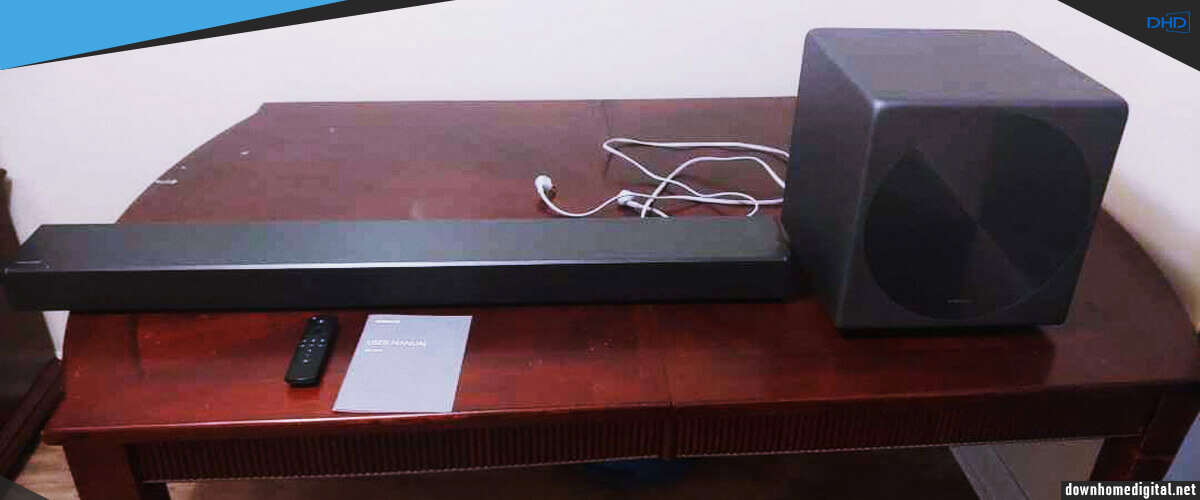
It has an extremely powerful alternative that promises smooth sound quality. The wireless Samsung sub can be classified in the middle to higher price segment and offers a strong sound performance and elegant and high-quality workmanship under these conditions. Samsung’s Distortion Cancelling technology detects and neutralizes distortion before it occurs.
So, if you’ve been looking for a wireless subwoofer for a home theater with full speakers or noisy parties, this isn’t it. The 25-watt, 10-inch Samsung SWA-W700 is perfect for amplifying the bass of your TV or, better yet, for a Samsung soundbar. That’s what the manufacturer itself declares. But that’s the beauty of this baby. The sound for such parameters is simply excellent: bright, detailed, deep, and not blurred. When watching movies on TV, the difference is obvious. There are no distortions or vibrations; it is only what it is designed for. At the same time, it can be heard well even in a large room, but this sub does not shake the walls. An interesting experiment in my practice.
Key specs
- Power (RMS), W: N/A.
- Driver size, inch: 10.
- Frequency response: 27Hz-120Hz.
- Dimensions, inch (HxWxD): 13.3×12.6×12.6.
Pros
- It easily pairs with various devices.
- Excellent quality of the sounds and bass.
- It is suitable for home theatre audio systems.
- You will not have difficulties in managing this model.
Cons
- On the rear side of the subwoofer, you have only volume level control.
Klipsch R-12SWi – budget
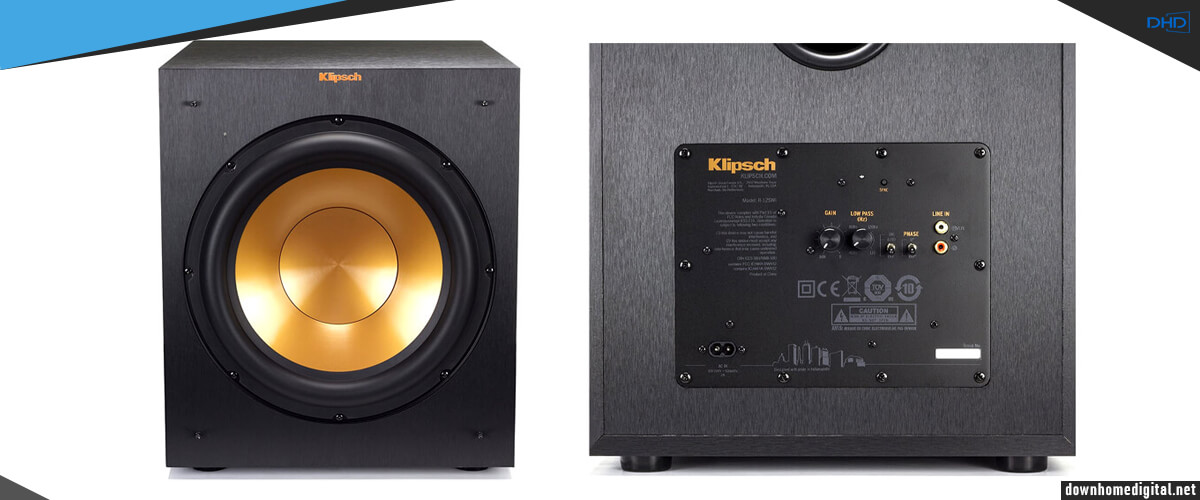
The approach to the choice should be especially careful regarding inexpensive alternatives. After all, you don’t mean buying disposable appliances, but you want to buy high-quality and inexpensive one. In my opinion, Klipsch R-12SWi is a decent budget model that can easily compete with even higher-class competitors. But what can I say? I don’t hide my admiration for the brand’s tech, so my review’s premium and budget versions are from Klipsch.
Its design is made in the same concept as the Klipsch Reference series speakers, in which black and copper-gold colors are organically combined. The subwoofer’s case is made of thick MDF, equipped with internal ties and damping to eliminate sound coloration at high volume, and its external finish is made of rough vinyl film. The front panel of the subwoofer has an LED power-on indicator. Everything is ergonomic, comfortable, and uncluttered.
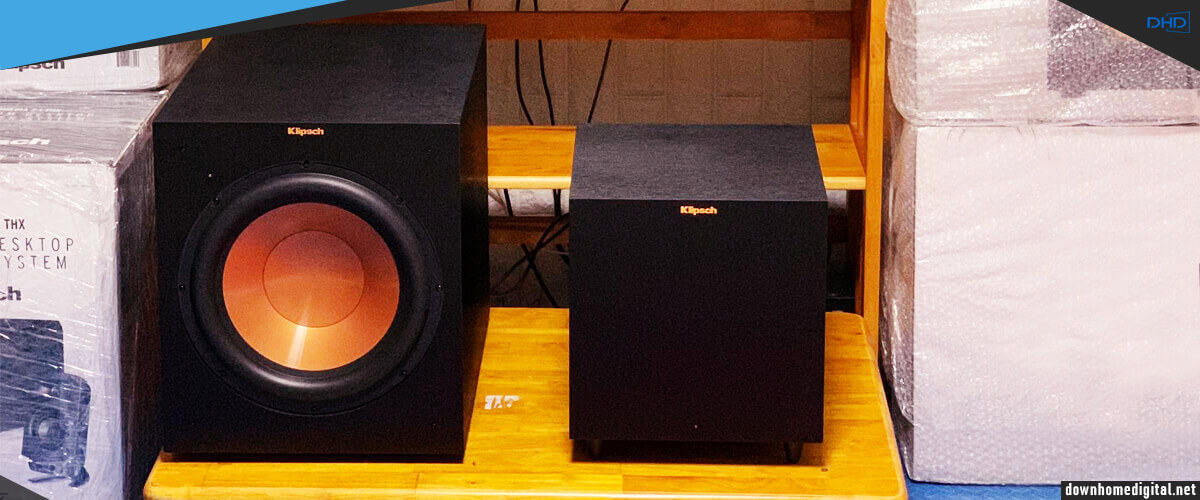
The Klipsch R-12SWi has a 12-inch bass driver located on the front panel and is covered by a removable protective mesh. The bass driver has a die-cast graphite cone with external copper plating, which dampens unwanted vibrations and resonances. The speaker is connected to a powerful Class D amplifier. On the back panel of the Klipsch R-12SWi, you’ll find quite a traditional set of controls.
This wireless subwoofer for TV performed well during tests. I tested it in my home theater, and it really stood out from many of its counterparts. Explosions, chases, gunfights, and jet engines sounded like they were happening right in front of me. Klipsch knows its business, but compromises with budget equipment are inevitable. The signal is unstable. I mean, not often, but the bass part lagged behind the overall soundstage. And I can clearly hear the kickback from the cabinet. It sounds powerful in a studio of about 300 square feet, filling the space well. However, when moving it to different locations, I found that the R-12SWi felt better away from obstructions (walls, corners, furniture).
Klipsch R-12SWi, unlike Samsung SWA-W700, is a full-fledged wireless sub with 200W of power (400W peak). But, of course, it is inferior to its premium brother. Although I am a big fan of wired speakers, in this concrete case, objectively, the model loses to the selection leader in the quality of connection. Sonos has succeeded in this case and is out of competition. With R-12SWi, the situation is unstable. I was satisfied with the transmission of bass bands, but sometimes, there is a clear delay. I also do not find the cabinet reliable; it has a strong recoil, and a listener with good hearing will pick up vibrations (although they are not that significant). I also recommend placing it away from walls or obstacles; let it breathe, so to speak. All in all, it is quite acceptable and expected for its low price drawbacks.
Key specs
- Power (RMS), W: 200/400.
- Driver size, inch: 12.
- Frequency response: 29Hz-120Hz.
- Dimensions, inch (HxWxD): 16x14x18.5.
Pros
- Deep bass in large rooms.
- Proprietary bass driver.
- High-quality construction and durability.
- Easy and quick to set up.
Cons
- A slight delay in some of the bass.
- The cabinet could have been optimized to make the bass smoother.
Bose Bass Module 700
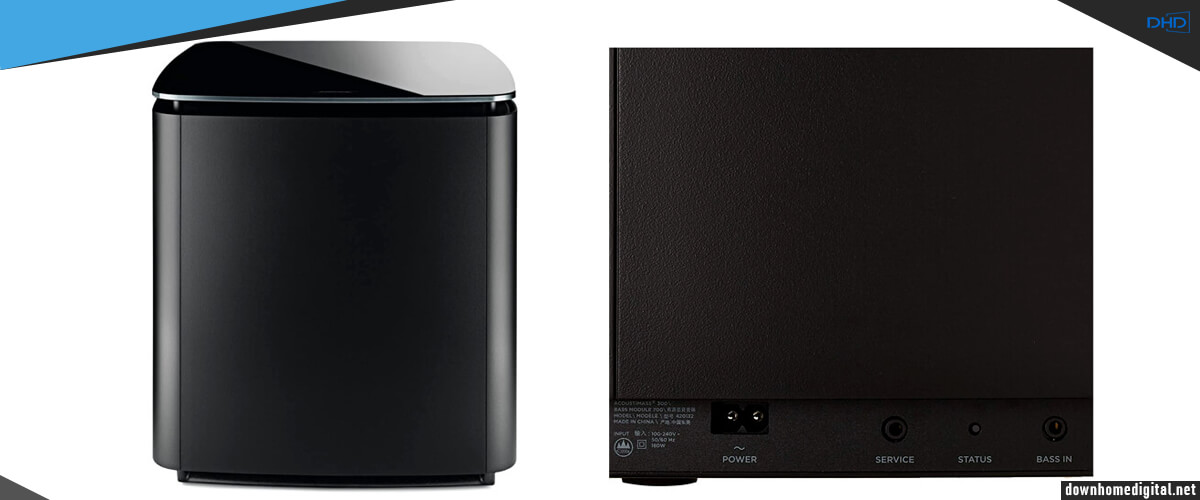
Another model I want you to get acquainted with is Bose Bass Module 700. This company has quite successful solutions with good sound, but I did not always like the design of their devices. And this time, they pleasantly surprised me in this respect. Because of the exquisite finish in the form of polished tempered glass, the Bass Module 700 looks really expensive and stylish compared to its analogs. In addition, there is a choice of 2 colors available: Bose Black and Arctic White.
The dimensions of this model are 12.9″ H x 11.6″ W x 11.6″ D (30 lbs). The radius of action of the device is about 30 feet, which will allow you to choose the most optimal place for it. By the way, Bass Module 700 can also be connected with a standard 3.5 mm audio cable.
This model is equipped with a fairly powerful 12-inch woofer, as well as a specially designed acoustic waveguide based on QuietPort technology. The manufacturer claims that all unwanted distortions are practically reduced to zero thanks to it. Well, let’s check on tests.
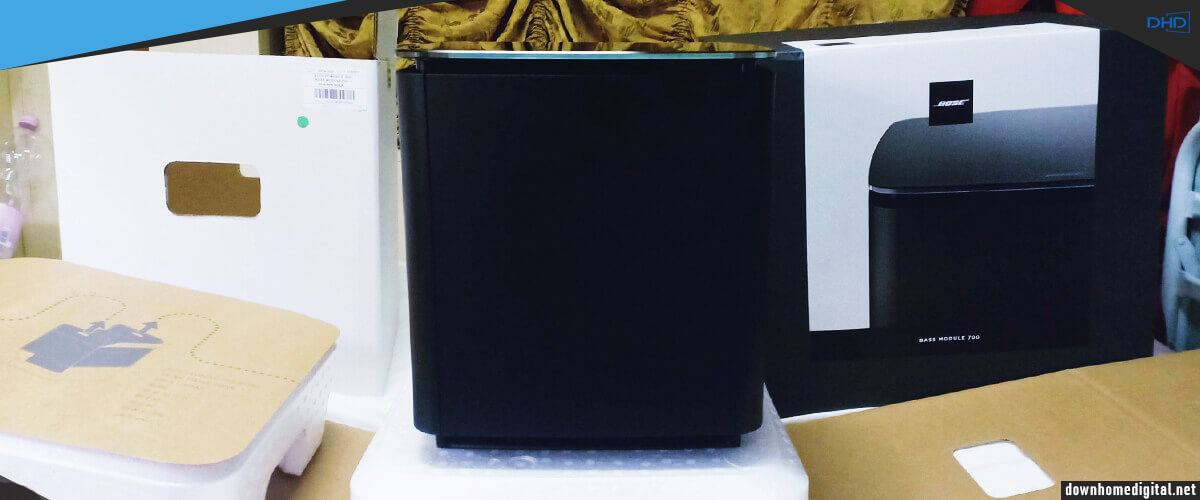
According to the test results, I was pleased with the sound! I could really feel the powerful bass and the other frequencies were on par. The sub does not bang but rather qualitatively amplifies the bass. The QuietPort technology actually works and removes distortion. So the manufacturer was honest with us.
And now a few of my recommendations to help you make the finest use of this device. This wireless powered subwoofer should preferably be placed on the floor against the wall as the TV and the soundbar to ensure the highest sound quality. Of course, there should be a power outlet nearby. I would not recommend putting it on a shelf or a table. If you want richer bass, put the Bose Bass Module 700 closer to the wall or even in a corner. And if you feel that you need to reduce the share of low frequencies, just move it away from the wall.
The Bose Bass Module 700 made it into my review for several reasons. It is the only sealed sub of my rating. It looks really great. But in fact, it doesn’t perform the function of a full-fledged sub (which reminds me of Samsung SWA-W700) but just amplifies the TV’s sound. Compatibility is better with Bose products, and the range is limited to 30 feet. That said, the maximum power output is 110 watts (the manufacturer doesn’t even specify RMS). It can also overheat if run at high volume for long periods or too close to the wall. The signal is also sometimes lost (which is quite natural for wireless technologies). So why would you decide to purchase it? I can’t really answer that question. It would be just a great sub for a small room (even with its shortcomings) if it weren’t for the high price (about the same as the Sonos Sub Gen3). But it sounds great without losing clarity, even at high volume.
Key specs
- Power (RMS), W: N/A.
- Driver size, inch: N/A.
- Frequency response: N/A.
- Dimensions, inch (HxWxD): 12.9×11.6×11.6.
Pros
- Looks stylish and is quite compact.
- No sound distortion, even at maximum volume.
- Clear, deep, and solid bass.
Cons
- May heat up quite a bit during prolonged use at full power.
- Sometimes the subwoofer can lose the connection.
How to make your subwoofer wireless?
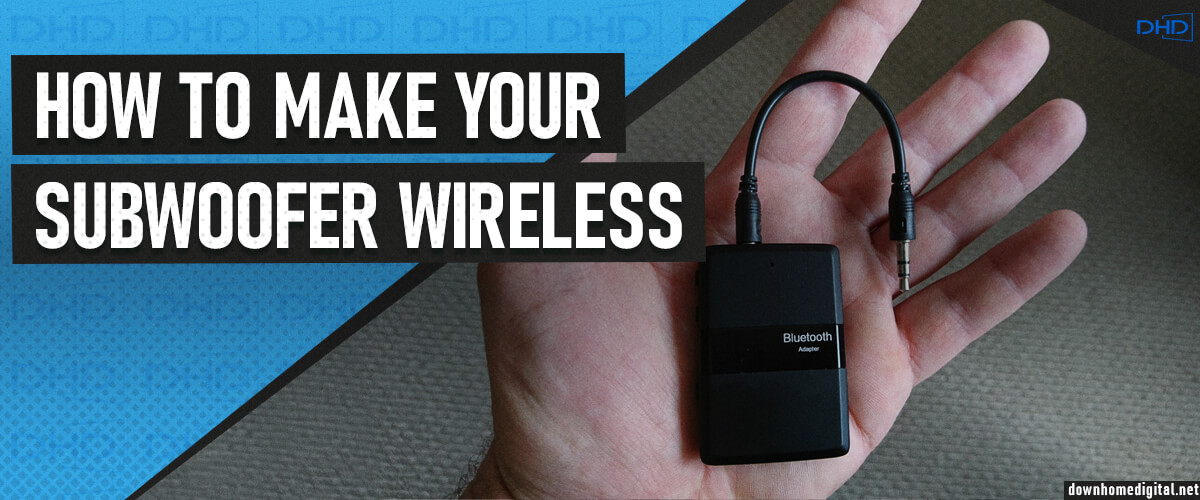
If you already have a nice subwoofer, there are possibilities to make it wireless. First, you must check if your model is compatible with adapters or AV devices. In most cases, you should be able to do that. By getting the proper device, you simply connect it and adjust the receiving signals. The transmitter should be connected to an AV receiver. Alternatively, a transmitter can be connected to a two-channel stereo preamplifier. Then, you cable the receiver with a subwoofer via single RCA to LFE input. When it is over, you just synchronize devices to have them the same frequencies and volume. As a result, you receive a personal wireless home theater sub.

